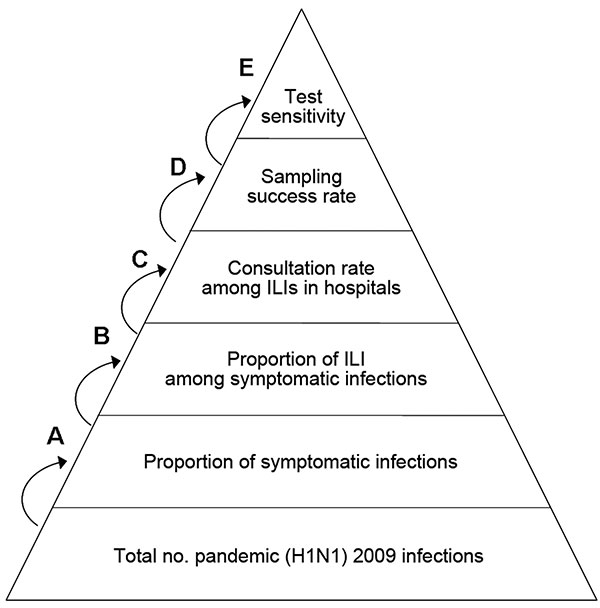Volume 16, Number 11—November 2010
Dispatch
Estimates of the True Number of Cases of Pandemic (H1N1) 2009, Beijing, China
Figure

Figure. Model parameters for estimating the true number of persons infected with pandemic (H1N1) 2009 in Beijing. A, hospitals refer to level 2 and 3 hospitals in Beijing; B, sampling success rate was included in the model because not all actual positive specimens gave positive results because of the timing of collection or the quality of the specimen; C, test sensitivity was included in the model because not all actual positive specimens gave positive results due to the insensitivity of PCR reagent and unpredictable errors in experimental operations and instruments; D, proportion of true pandemic (H1N1) 2009 cases for which specimens were successfully collected; E, proportion of true positive specimens that were correctly identified by PCR reagent. ILI, influenza-like illness.